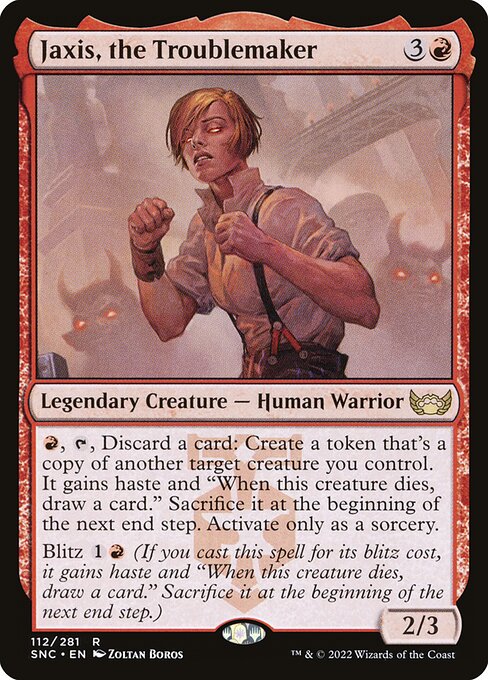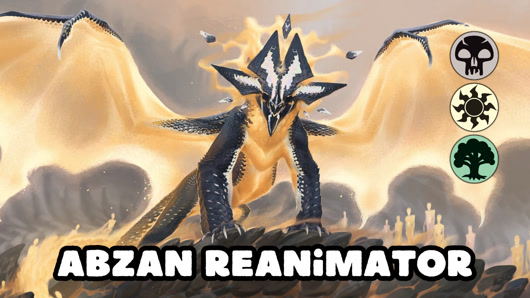Why Seek Good Build Arounds?
Magic: the Gathering is many things to many people, so for some readers, this topic might not be relevant at all, but if you clicked on the headline, I'm guessing you can appreciate building a deck from scratch. The experience of building a brand-new Magic deck and the experience of playing a deck tightly are completely different, but both have their place.
Ultimately, Magic: the Gathering is a game, and you need to make sure you're engaging with the elements of it that you find most rewarding emotionally. If you aren't having fun (in one way or another), I would highly recommend you change something. Personally, I find fun in turning underappreciated cards into functional decks that are able to win even when they're up against proven strategies. Even if my win rate would be higher with an established deck, I would rather spend my time engaging with my own creations and try to bring out the best in them.
The End Goal
Before you start to build any deck, make sure you have a clear understanding of your objective. Is the goal to climb to Mythic on Arena, or is the goal to simply see if a dud rare you opened can be viable in the current meta? There are a number of build-around cards where you need to start by exploring the possibilities.
Be honest with yourself, and if a build-around doesn't look competitive, know that it probably isn't, and that's okay. Reframe your goal from 'get to mythic with X,' to 'see how consistent I can make X.' Also, know that playing on Arena means you'll go up against top-tier meta decks even in the play queue given how the system heavily incentivizes wins.
The Criteria
There are a few criteria I use whenever I'm judging a build-around card. They come down to:
- What is this card asking of me?
- What is the payoff for performing that action?
- Can this payoff win me a game?
- Can I pull this off in the current meta?
When we look at cards that see play in competitive formats, they often ask very little in the way of setup while providing value that is beyond what you'd get for that kind of mana with other available options. To illustrate my point, I'm going to break down how a few meta cards fit this bill.
Raffine, Scheming Seer is incredible and the defining build-around linchpin of the Esper Midrange list that made up a huge percentage of the field at the last pro tour. The card asks only that you have at least one other creature on board that can attack, and the payoff is excellent card selection and a stat boost to the attacking creature. The fact that Raffine herself also has flying is gravy that allows her to get the job done even if you don't manage to have another creature on board earlier. The investment is negligible, and the payoff outstrips most other three-mana options you'll find in the format.
Atraxa is an interesting case because she costs seven mana, which is a lot, and it requires four separate colors. In order for her to work, you need to ramp aggressively, which isn't always easy to pull off, so the ask here is actually very high. But, in return for pulling this off, you get to put 3-6 cards into your hand with selection and place a body on board that can stabilize from almost any losing board state. If she or you aren't eliminated immediately, she'll probably win you the game. This is how good seven-drops have to be in order to see meaningful play.
Atraxa also presents the best option at seven mana by a mile, which can be problematic if you want to ramp into anything else or reanimate anything else. You have to ask yourself, 'would this strategy be better if the payoff was just Atraxa,' and, unfortunately for us jank lovers, the answer is usually yes.
As I'm looking at these, I'm realizing most of the big threats in Standard are female-presenting and I think that's just neat. Representation for the win. Anyway, Sheoldred is an interesting case because she asks the player to get to four mana. That's not difficult at all, and the payoff that you get is an over-stated monster that will simply win the game by sitting on the board. This card is arguably fair because it's a creature that's susceptible to removal, but if the opponent doesn't have removal on-hand, she practically wins the game on the spot. Definitely worth the price.
Commander vs. Standard
In Commander, you can build nearly anything at all because the social contract places arbitrary rules on the game to help encourage enjoyment from every player. I enjoy Commander and I think it has its place as an alternative to a board-game played with friends, but taking that mentality into a 60-card constructed format like Standard will often get you, as a deck builder, into trouble.
The reason I decided to write this article today is because I've been trying to build a deck in Standard taking advantage of Jaxis, the Troublemaker and Ertha Jo, Frontier Mentor. This combo allows the creation of multiple tokens in a single activation, extra card draw, and gigantic boards if Ratadrabik of Urborg is around. Every attempt at the deck failed and I found it very frustrating. My goal had been to create a competitive deck around this combo, but that goal wasn't realistic given the tools I was working with. Let's break down the pieces.
Ertha Jo is an interesting card that asks you to target creatures or players with abilities that would be good in multiples. There's the obvious mercenary synergy, but this also works with planeswalker abilities that target players such as Liliana of the Veil. The effect is powerful, but it asks you to stick a four-drop creature, keep it around, and then also have another permanent with a specific type of activated ability on board. The ask is steep enough to be challenging in Standard, and the payoff is not good enough to win a game.
Jaxis is a fun card that has a Kiki-Jiki style ability that can be situationally powerful, but this incarnation of it has a lot of safety valves that make it suboptimal. Having to discard a card is a huge cost, and if the token is exiled, you never replace it in your hand. We also have a ton of board wipes in Standard that means we aren't likely to see another turn if the copied permanent doesn't win the game on the spot. The current meta is just very hostile to creatures, so having a factory that can create a lot of them just isn't good enough to carry the day anymore.
So, is My Pet Card a Good Build Around?
You can approach building around a card or combo in a number of ways. If your goal is to simply see if it's viable and you will take pleasure in the journey, then have at it and have some fun. Wrack up those losses but learn lessons and smile along the way. If, like me, you find losing disheartening and want to focus on decks that can win in the current meta, consider the criteria I mentioned and try to find cards that offer a minimal cost and a payoff that can win the game. Any card can bring you joy if you're receptive to the kind of experience it can give you. Just be realistic in your expectations and have fun.
Also, if you find yourself frustrated that you aren't getting the results you're after, don't hesitate to scrap a deck. Accepting that an idea doesn't work just frees you up to move on to the next idea, or revisit a deck you know works that makes you happy. Never forget that this is a game. Games are fun. Let's keep it fun.
Happy brewing!












